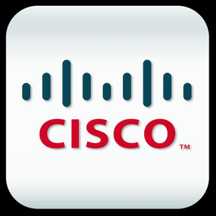Cisco Releases Visual Networking Index for 2011-2016
New High-End “360-Degree” Projectors from Mitsubishi
February 17, 2012Hitachi Announces New Installation Projectors
February 21, 2012Cisco Releases Visual Networking Index for 2011-2016

 Networking equipment maker Cisco Systems believes that video will continue to be a strong driver of traffic increases on global mobile data networks and has released the latest in their annual series of reports that track and forecast the impact of visual networking applications on global networks. This year’s report details a number of advances that affect the New Era projector market.
Networking equipment maker Cisco Systems believes that video will continue to be a strong driver of traffic increases on global mobile data networks and has released the latest in their annual series of reports that track and forecast the impact of visual networking applications on global networks. This year’s report details a number of advances that affect the New Era projector market.
- Mobile data traffic grew 133% in 2011.
- Connection speed on mobile data networks in 2011 grew by 66% over 2010, averaging 1.4 megabits per second.
- Smart phones, which represent 12% of global handsets in use, consumed an average of 150 megabytes per month in 2011, nearly triple that of 2010.
- In 2011, for the first time, mobile video traffic accounted for more than half of all mobile data traffic (52%).
Taken together, these statistics indicate that the average smart phone user took advantage of a robust content delivery network in 2011 and it delivered high quality video they could display for small to medium sized audiences via pico projector.
Cisco paints an even brighter future.
- Mobile network connection speeds are expected to grow nine fold by 2016, exceeding 2.9 megabits per second in 2016.
- The average smartphone is forecast to consume 2.6 GB of traffic per month in 2016, a 17-fold increase.
- 70% of the world’s mobile data traffic is expected to be video by 2016.
To illustrate the devices that contribute to the historical and forecast increases in mobile network traffic, the Visual Networking Index (VNI) ranks categories of mobile devices and compares them to standard handsets. While smart phones generate 35 times the mobile data usage of standard handsets, mobile phone projectors use 300 times the mobile data, more than twice that of a tablet (121X) and second only to laptops (498X) Mobile users with pico projectors clearly value ease with which they can pull down a video, be it YouTube or sales presentation, and share it with friends or clients.
Now if the wireless carriers would only figure this out. These users are something the carriers can monetize; advertisers would kill to reach this market and, more importantly, would pay for the privilege.
PMA’s projector market research and end-user/industry surveys routinely reveal that sharing video is the number one reason consumers purchase pico projectors. Cisco’s VNI offers a compelling argument that this trend will continue.